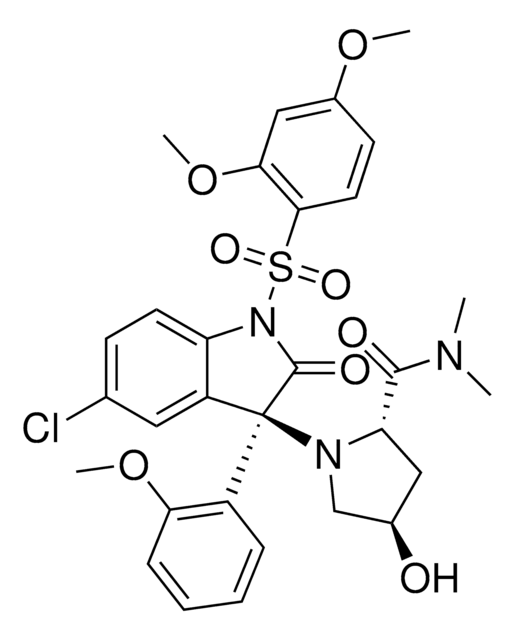T1516
DL-Trihexyphenidyl hydrochloride
solid
About This Item
Productos recomendados
Formulario
solid
color
white
solubilidad
methanol: soluble 50 mg/ml, clear to hazy, colorless
H2O: soluble
cadena SMILES
Cl[H].OC(CCN1CCCCC1)(C2CCCCC2)c3ccccc3
InChI
1S/C20H31NO.ClH/c22-20(18-10-4-1-5-11-18,19-12-6-2-7-13-19)14-17-21-15-8-3-9-16-21;/h1,4-5,10-11,19,22H,2-3,6-9,12-17H2;1H
Clave InChI
QDWJJTJNXAKQKD-UHFFFAOYSA-N
Información sobre el gen
human ... CHRM1(1128) , CHRM2(1129) , CHRM3(1131) , CHRM4(1132) , CHRM5(1133)
Aplicación
Acciones bioquímicas o fisiológicas
Nota de preparación
Palabra de señalización
Warning
Frases de peligro
Consejos de prudencia
Clasificaciones de peligro
Acute Tox. 4 Oral
Código de clase de almacenamiento
13 - Non Combustible Solids
Clase de riesgo para el agua (WGK)
WGK 3
Punto de inflamabilidad (°F)
Not applicable
Punto de inflamabilidad (°C)
Not applicable
Equipo de protección personal
dust mask type N95 (US), Eyeshields, Gloves
Elija entre una de las versiones más recientes:
¿Ya tiene este producto?
Encuentre la documentación para los productos que ha comprado recientemente en la Biblioteca de documentos.
Nuestro equipo de científicos tiene experiencia en todas las áreas de investigación: Ciencias de la vida, Ciencia de los materiales, Síntesis química, Cromatografía, Analítica y muchas otras.
Póngase en contacto con el Servicio técnico








